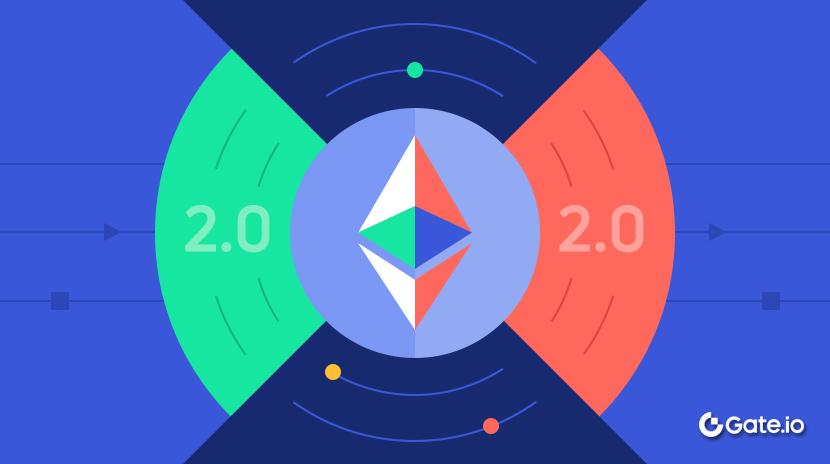4844

4844 is a significant component of Ethereum's Dencun upgrade (formerly EIP-4844), which went live on March 13, 2024. It represents a crucial step in Ethereum's scalability roadmap by introducing temporary data storage mechanisms called blobs (binary large objects), substantially reducing costs for Layer 2 scaling solutions such as Optimistic Rollups and ZK-Rollups. This upgrade, also known as Proto-Danksharding, serves as an intermediate stage toward full Danksharding (comprehensive sharding technology), bringing greater data availability and lower transaction fees to the Ethereum network through new transaction types and data handling methods.
Background: The Origin of 4844
4844 originated from Ethereum Improvement Proposal EIP-4844, introduced in 2021 by Ethereum core developers including Vitalik Buterin and Dankrad Feist. The proposal was designed to address Ethereum's high transaction fees, particularly by providing a more cost-effective data publication mechanism for Layer 2 scaling solutions.
In Ethereum's scalability roadmap, sharding technology is viewed as a long-term solution, but complete implementation requires several years. Proto-Danksharding serves as a transitional phase, allowing developers to benefit from partial scalability improvements without waiting for the complete sharding technology.
4844 underwent rigorous testing and review from proposal to implementation, including multiple deployments and validations on test networks before its successful mainnet launch with the Dencun upgrade. This process demonstrates Ethereum community's methodical approach to technical evolution, ensuring network security while advancing scalability.
Work Mechanism: How 4844 Works
4844's core innovation lies in introducing a completely new transaction type—blob-carrying transactions—and corresponding data processing mechanisms:
-
Blob Data Structure: Blobs are large data packages stored on the blockchain but not permanently retained, specifically designed for Layer 2 solutions, capable of holding up to 125KB of data.
-
Data Availability and Validity Period: Blob data remains visible to validators and network participants for approximately 1-2 weeks, after which it's automatically pruned by the network. This temporary storage characteristic effectively balances data availability with storage pressure.
-
Pricing Mechanism: 4844 introduces a blob pricing mechanism independent of Ethereum's main network gas fees, automatically adjusting costs through target data volume, allowing Layer 2 solutions to publish data at more predictable and lower costs.
-
Cryptographic Verification: Each blob is verified using KZG commitments (Kate-Zaverucha-Goldberg commitments), a cryptographic method ensuring data integrity while avoiding the burden of all nodes downloading complete blob data.
-
Execution Environment Separation: Blob data is separated from Ethereum's execution layer (EVM), not directly participating in smart contract computation but serving as a data availability layer for Layer 2 solutions.
This design allows Layer 2 solutions to publish their proofs and transaction data to Ethereum mainnet while significantly reducing costs, providing more economical transaction experiences for end users.
What are the risks and challenges of 4844?
Despite the significant benefits 4844 brings to the Ethereum ecosystem, it also faces potential risks and challenges:
-
Technical Complexity: Introducing new transaction types and data structures increases system complexity, potentially leading to undiscovered vulnerabilities or security risks.
-
Network Resource Pressure: Although blob data is temporarily stored, large volumes of blob transactions may still create short-term storage and bandwidth pressure on nodes, particularly for validators with limited resources.
-
Ecosystem Adaptation: Layer 2 projects, wallet providers, and infrastructure services need technical adjustments to fully utilize blob transaction functionality, a process that might not be entirely smooth.
-
Pricing Mechanism Uncertainty: The new blob fee mechanism may face unexpected challenges in practical use, such as pricing volatility or market adaptation issues.
-
Transition to Full Danksharding: Proto-Danksharding is merely an intermediate step, and future transition to complete sharding technology may bring additional technical challenges and coordination costs.
Furthermore, as a major upgrade to the Ethereum network, any implementation issues could have widespread effects across the entire ecosystem, necessitating ongoing community monitoring and optimization.
4844, as a key milestone in Ethereum's scalability roadmap, marks significant progress in addressing blockchain's "impossible triangle" problem. By introducing blob transactions and temporary data storage mechanisms, 4844 effectively reduces costs for Layer 2 solutions, enabling the Ethereum network to support broader application scenarios and larger user bases. For average users, this means lower transaction fees and smoother user experiences; for developers, it provides infrastructure support for building efficiently scalable applications. As more Layer 2 projects adapt to and fully utilize this technology, the overall throughput capacity of the Ethereum ecosystem will significantly increase, paving the way for large-scale adoption of Web3 applications.
Share
Related Articles

What Is Ethereum 2.0? Understanding The Merge

Reflections on Ethereum Governance Following the 3074 Saga
